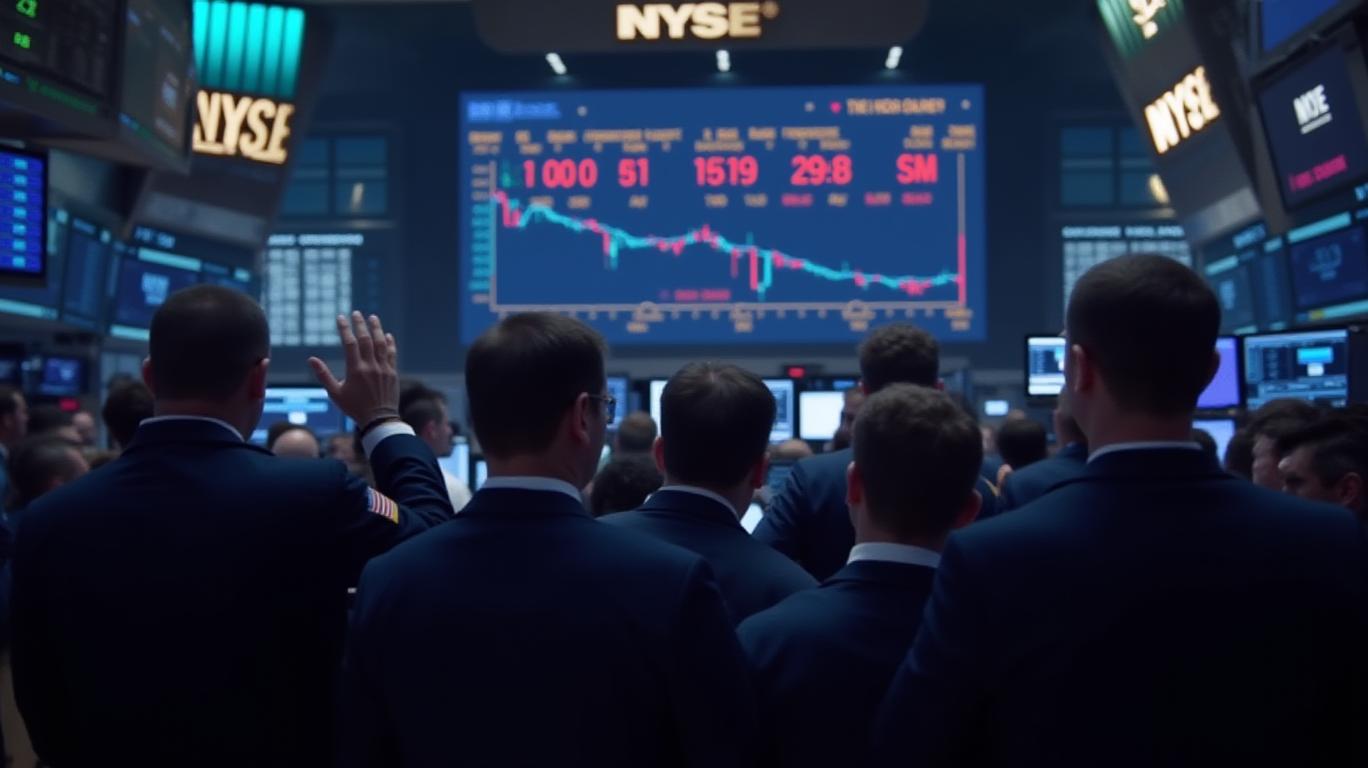Stocks Stumble Despite Big Tech Optimism, Fed and Tariff Uncertainty Linger
Chris Whalen: Private Equity Train WreckStocks finished mixed Monday as gains in technology shares failed to lift broader indexes weighed down by rising bond yields and investor caution ahead of a

Stocks finished mixed Monday as gains in technology shares failed to lift broader indexes weighed down by rising bond yields and investor caution ahead of a pivotal Federal Reserve meeting. The Dow Jones Industrial Average slipped 64.36 points, or 0.14%, closing at 44,837.6. The S&P 500 edged up 1.16 points, or 0.02%, to 6,389.80, while the Nasdaq Composite outperformed, climbing 70.27 points, or 0.33%, to 21,178.6.
Despite positive sentiment around upcoming earnings from tech giants Microsoft and Meta, markets remain on edge amid shifting monetary policy expectations and tariff developments. Roughly 64.4% of NYSE-listed stocks declined, with breadth notably weak in the Dow.
Treasury Yields, Fed in Focus
The bond market offered no respite. The yield on the 2-year Treasury futures contract for July 2025 fell 2.9 basis points to 3.8210% intraday, while the benchmark 10-year yield climbed to 4.42%, reflecting growing bets that the Federal Reserve may delay interest rate cuts in the face of lingering inflation and tariff pressures.
The CME FedWatch Tool shows traders assigning a 64% chance of a rate cut in September, but Goldman Sachs remains dovish, forecasting cuts in September, October, and December. Still, the inflation trajectory remains uncertain. Goldman expects tariffs to temporarily push core PCE inflation above 3% in coming months before drifting back toward the 2% target.
Adding to the tension, Fed Chair Jerome Powell is set to speak Wednesday. Markets will parse every word for hints on whether the September cut remains viable. "We expect no rate change this week, but two dissents could highlight deepening divisions within the FOMC," wrote Goldman’s David Mericle.
Microsoft, Meta Set to Report
Tech optimism is building ahead of Microsoft and Meta earnings, both due Wednesday after market close. Microsoft is projected to post EPS of $3.35 on $73.86 billion in revenue, with Azure cloud growth targeted at 34–35% year-over-year. Analysts from UBS and Stifel see upside to 36% if enterprise demand remains firm.
Capital expenditure remains a central theme, as Microsoft eyes up to $110 billion in FY26, surpassing peers like Alphabet and Meta. Analysts are also watching commercial adoption of Microsoft 365 Copilot and Fabric, both of which showed strong user growth last quarter.
Meta, meanwhile, is forecast to report $44.8 billion in revenue and EPS of $5.83 for Q2, amid a major AI investment spree and rising CapEx now forecast at $64–72 billion for 2025. Advertising remains the company’s key revenue driver, with analysts eyeing monetization of WhatsApp and Threads. JPMorgan recently cited “high‑teens earnings growth” across U.S. digital ad platforms including Meta.
Trade Developments Provide Limited Relief
On the geopolitical front, the U.S. and EU announced a new trade deal, setting a baseline 15% U.S. tariff on most EU imports while eliminating EU tariffs on American products. This modestly reduces the expected rise in effective U.S. tariff rates by 0.7 percentage points, according to Goldman Sachs.
The deal also includes a $750 billion energy purchase commitment and $600 billion in EU investments, providing some buffer against the Aug. 1 tariff escalation deadline. Still, more than half of U.S. imports come from countries that have not finalized deals, leaving the risk of broad-based tariff hikes on the table.
Commodities React to Yield and Inflation Fears
Commodity prices responded to shifting interest rate and inflation expectations. Gold futures for August fell $22.80, or 0.68%, to $3,312.80. Crude oil for September delivery surged 2.58% to $66.84 a barrel, driven by speculative buying and supply concerns.
Looking Ahead
Markets enter a critical week, with Wednesday’s Fed announcement, Thursday’s PCE inflation report, and Friday’s July jobs data set to shape expectations for the rest of 2025. For now, investors are hedging bets between bullish Big Tech momentum and macroeconomic headwinds that remain firmly in place.
Disclaimer: The views in this article are from the original Creator and do not represent the views or position of Hawk Insight. The content of the article is for reference, communication and learning only, and does not constitute investment advice. If it involves copyright issues, please contact us for deletion.